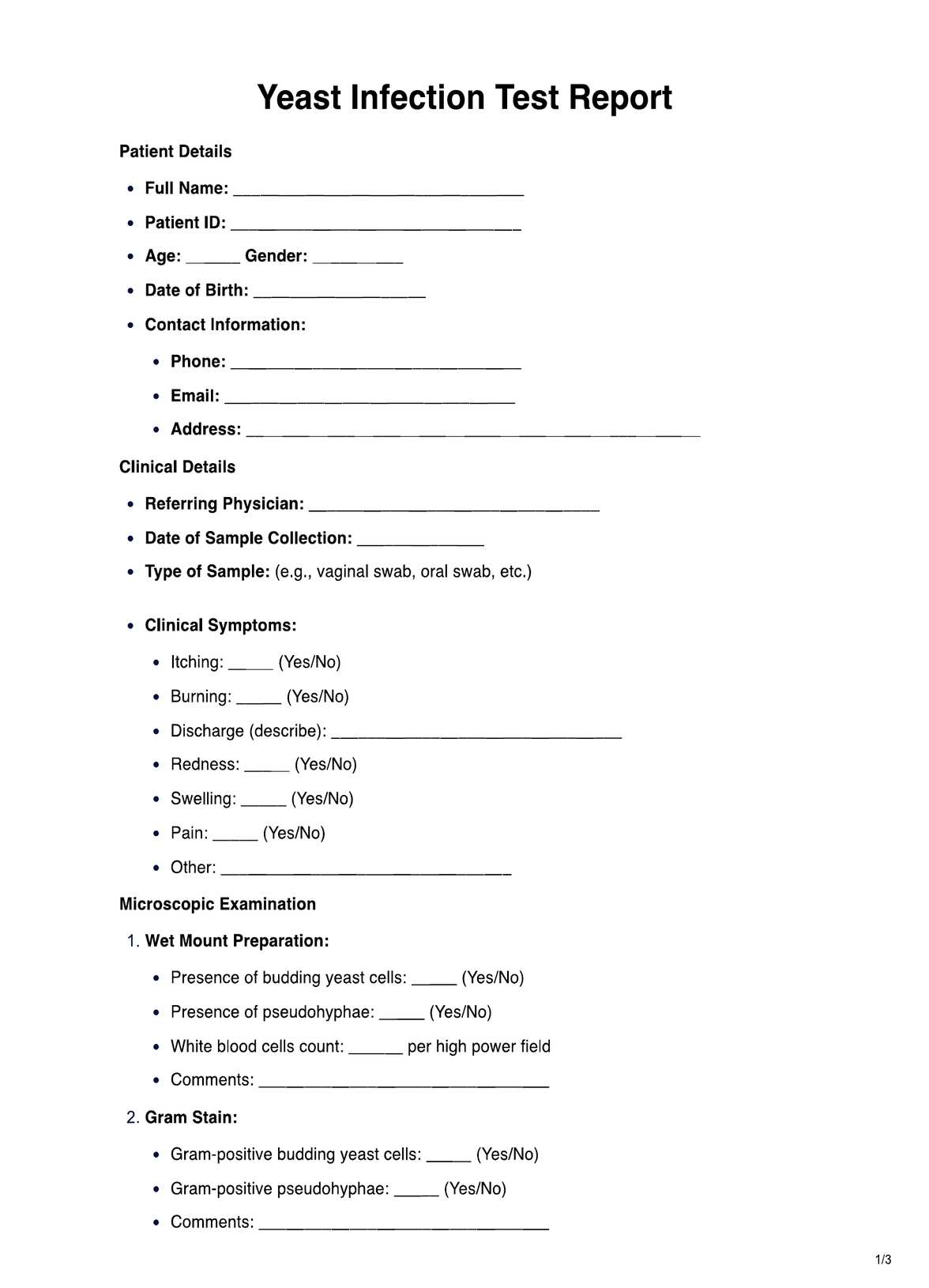Anyone experiencing symptoms of a yeast infection may request this test. It's especially useful for those who have never had a yeast infection or whose symptoms differ from previous infections.

Yeast Infection
Discover reliable Yeast Infection Test options, from professional lab tests to convenient at-home kits. Gain insights into your health and find effective solutions.
Use Template
Yeast Infection Template
Commonly asked questions
These tests are used when there are symptoms suggestive of a yeast infection, such as itching, burning, redness, and a thick, white discharge.
Tests are used by collecting a sample with a swab and applying it to a test strip or solution. The results indicate whether yeast is present, suggesting a yeast infection.
EHR and practice management software
Get started for free
*No credit card required
Free
$0/usd
Unlimited clients
Telehealth
1GB of storage
Client portal text
Automated billing and online payments











